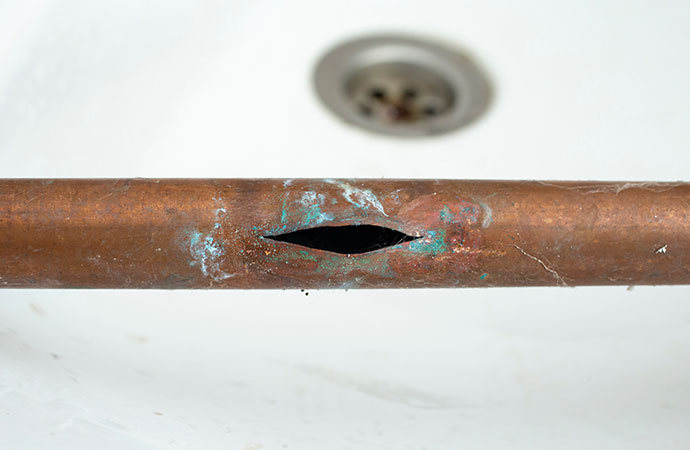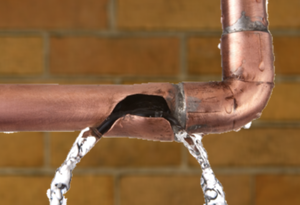Learning Effective Septic Tank Maintenance: What You Should Know
Learning Effective Septic Tank Maintenance: What You Should Know
Blog Article
We have noticed this great article on The Do’s And Don’ts After Water Damage down the page on the internet and think it made sense to discuss it with you in this article.

What should you do if a water pipe bursts in your house, producing a mini-waterfall as well as swamping a location of your house? In this circumstance, you have to act quickly. The longer you wait, the extra severe the water damage in your property. When an emergency like this happens, presence of mind is essential. For these reasons, you need to learn what to in case of a burst water pipe. Check out the following tips below to help you act quickly due to the fact that time is important.
Shut Off the Key Waterline Shutoff
Look for the neighborhood shut-off valve to turn-off water in one details area just. This will reduce off the water in your whole residence. Typically, the major valve is located outside the house following to the water meter.
Call Water Damage Reconstruction Pros for Help
After closing the water source, call the pros for assistance. This is not something you can readily do it yourself because they require to fix the pipes and also deal with the problems to your residential or commercial property. Look for aid from a reliable business supplying 24/7 emergency services. With their professional aid, you can mitigate exacerbation due to the fact that water can seep through your points causing warped baseboards, loose floor tiles, or damages structure. Don't take this issue gently and also look for profession assistance for total satisfaction.
File the Damages For Insurance coverage
As you are waiting on the pros to show up, document the damage caused by the errant pipeline. Take images and also video clips of every little thing. Do closeup shots of belongings. These things will function as evidence for your homeowner's insurance. Remaining aggressive with this permits you to sue for protection, which will help you and also your family members return on your feet.
Restore Things That Can Be Saved
As soon as you're done taking photos, peruse the things and also get the most vital ones from the pile. Dry them off and also attempt to preserve as high as you can. Drag them far from moisture so they can start to dry.
Start the Drying Refine
Luckily, water from your waterlines are tidy so you do not have to worry concerning sewage system water. The flowing water may have disturbed the dirt and debris in your floorboards and also rugs. Be prepared with handwear covers as you make use of pails to dump out the water.
Professionals are the only ones qualified to take care of the burs pipelines and also succeeding damages. And remember, pipes don't just all of a sudden burst. You will typically see red flags like gurgling paint, odd sounds in the plumbing, mildewy smell, caving ceiling, peeling off wallpaper, or water discolorations. Take notice of these points, so you can nip any kind of concerns in the bud.
What should you do if a water pipe bursts in your residence, developing a mini-waterfall and also swamping a location of your house? For these reasons, you need to learn what to in case of a ruptured water pipeline. After closing the water source, call the pros for assistance. With their expert help, you can minimize worsening since water can leak through your things resulting in deformed walls, loosened tiles, or damage framework. Luckily, water from your waterlines are clean so you don't have to worry concerning drain water.
How to Handle a Burst Pipe and Minimize Damage
Steps to Take Ahead of Time
If you own property in an area that experiences cold weather, you need to be aware of seasonal maintenance tasks that will help you protect your property as the weather changes each year. One of the most important steps is to winterize your pipes to ensure they won't freeze or burst when the temperature drops. This includes action items like insulating any exposed pipes, detaching garden hoses and covering outdoor faucets. If the weather gets cold enough, you may even consider leaving a faucet dripping or opening cabinet doors during the coldest parts of the day.
No matter how prepared you might be, accidents and emergencies still happen. You'd be wise to set up a savings account specifically for your property so you have a "rainy day" fund set aside for unexpected expenses. All homes—regardless of age, location or condition—will inevitably need some form of emergency repair.
Steps to Take for Frozen Pipes
A frozen pipe will not necessarily burst, so if you can catch a frozen pipe early on, you could save yourself a major headache. When your area experiences frigid temperatures, be sure to check your plumbing and keep an eye out for warning signs like faucets only releasing small amounts of water or toilets not refilling when flushed. If you do run into one of these issues, you're likely dealing with a frozen pipe.
If this happens, your first step should be to cut off the water supply to that section of the plumbing. Expanding and freezing water can quickly cause damage. Even if the water supply is shut off, you will likely still deal with some leaking from the water that defrosts after the pipe has thawed. Be prepared with a mop, bucket and/or towels to quickly soak up any excess water.
In order to thaw a frozen pipe, you can use a space heater, infrared or incandescent heat lamp, or even a hairdryer to warm up the frozen area. Heat tape is also an option and should be used according to manufacturer instructions. Do not use any sort of open flame to thaw frozen pipes, as it poses a major fire hazard and can damage your pipes further.
Steps to Take for a Burst Pipe
Water damage claims are the second most common insurance claim in the U.S. When you're dealing with a frozen pipe, the water continues to expand as it freezes, which creates pressure that can cause a pipe to burst. When this happens, the crack or leak in the pipe allows water flow from the pipe to enter your home where it shouldn't. If a pipe does burst, you need to act quickly to mitigate property damage and repair cost.
Your very first step should be to shut off your main water supply to minimize flooding—typically the most expensive damage to address. Once you've shut off the water supply, make sure you identify the entire area that has been impacted by the leak. Remove as much water as possible—as quickly as possible—using a mop, sponges, towels or a shop vacuum or wet/dry vacuum. To prevent long-term damage due to moisture build-up, run a dehumidifier or fan in the affected area. Contact a licensed plumber to ensure the pipe is correctly repaired before running any water to that section of the home again. Burst pipes and the associated water damage are something you absolutely want to avoid as a property owner. If you've had to learn your lesson the hard way, don't let yourself get caught in a similar situation during the next spell of cold weather. The best way to deal with frozen or burst pipes is to prevent them in the first place—proactive winter maintenance will save you time, money and a whole lot of stress.

I am very serious about What To Do And What Not To Do When Dealing With Water Damage and I'm hoping you appreciated the entire blog posting. Make sure you take the opportunity to promote this post if you appreciated it. We cherish reading our article about Quick Tips To Help Deal With Water Damage.
Report this page